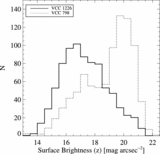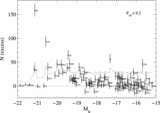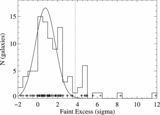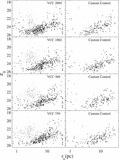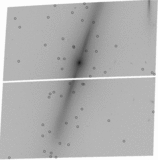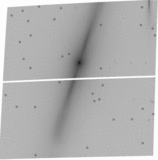Image Details
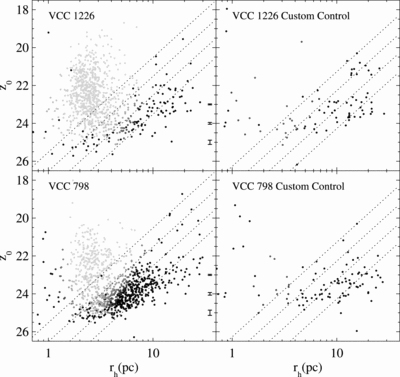
Caption: Fig. 1.
Size‐magnitude selection diagrams and control fields for VCC 1226 (M49; top) and VCC 798 (M85; bottom). Gray points with a mean half‐light radius of ﹩r_{h}=2.6﹩ pc are objects that likely belong to the traditional population of globular clusters. Black points represent objects classifies as likely to be contaminants. The left panels show the data for the galaxy fields, and the right panels show what is expected from the custom control field for each galaxy. Diagonal dotted lines are lines of constant mean surface brightness, ﹩\mu _{z}=18﹩, 19, 20, 21 mag arcsec−2 (left to right). Notice that VCC 798, despite having a smaller GC population than VCC 1226, has many more objects in the "contaminant" locus than would be expected from the control fields. These lower surface brightness objects are the star clusters of interest. Error bars represent the median photometric error at those magnitudes. Median errors in rh for those bins are 0.26, 0.57, and 1.22 pc, respectively.
Copyright and Terms & Conditions
© 2006. The American Astronomical Society. All rights reserved. Printed in U.S.A.


